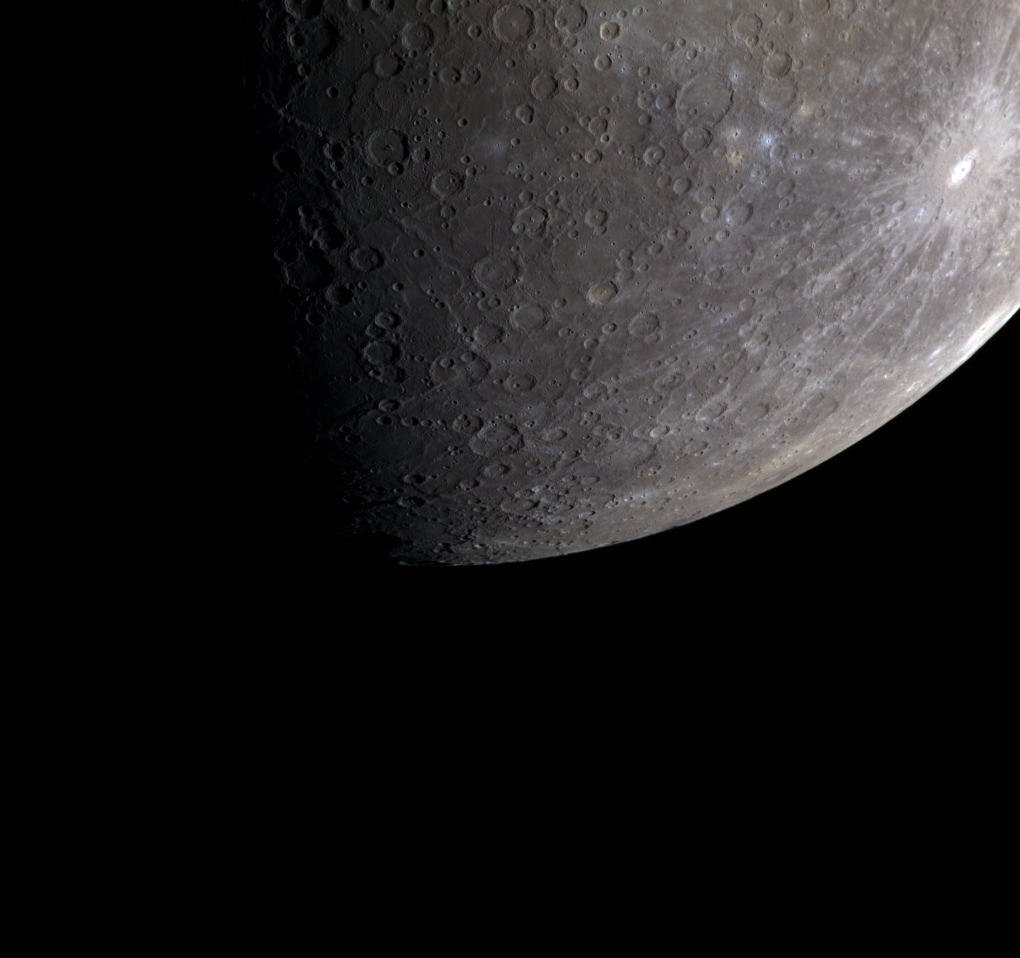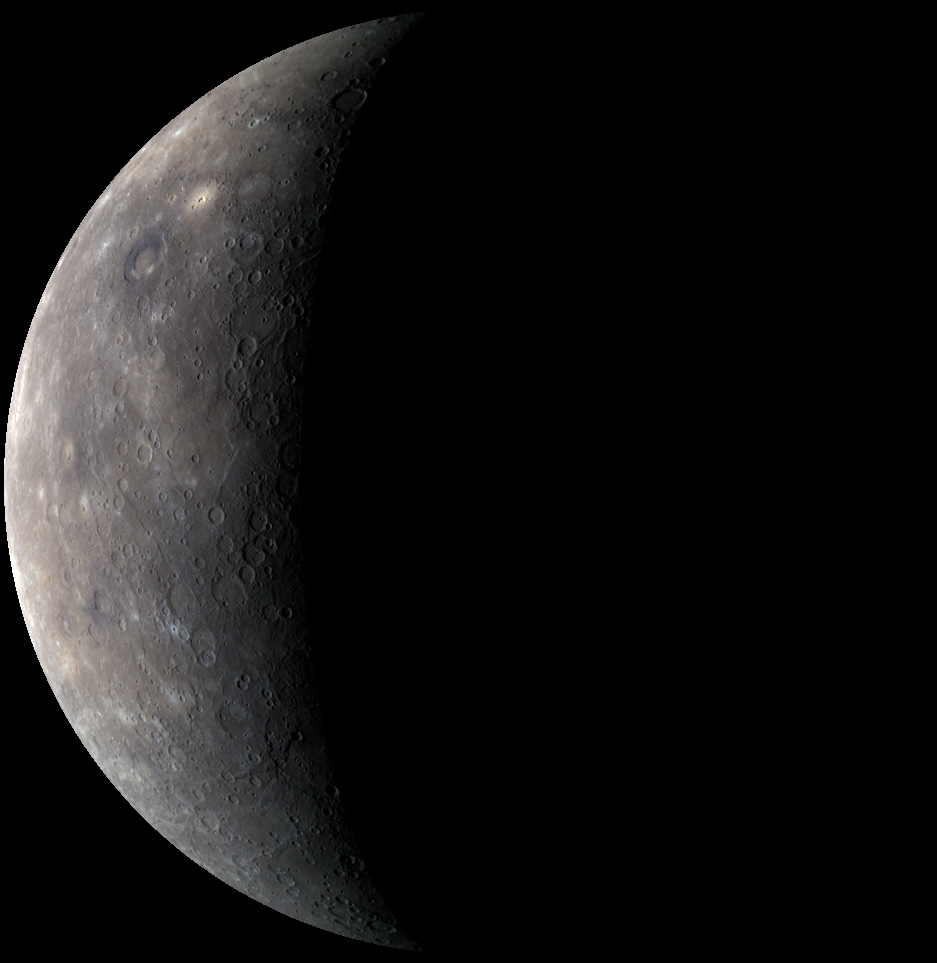The long awaited official trailer for “In Saturn’s Rings” has been unleashed. Looking forward to this film for over three years now.
Cosmos Time
 I don’t usually post tee designs not by Chop Shop, but as a massive fan both of Cosmos and Adventure Time — I couldn’t justify not tipping this off. For anyone not aware of the world around them, a new series called “Cosmos: A Space-Time Odyssey” is due to be released in Spring 2014. This time playing Jake the Dog to Carl Sagan’s Finn the Human will be Neil DeGrasse Tyson as illustrated in the design above.
I don’t usually post tee designs not by Chop Shop, but as a massive fan both of Cosmos and Adventure Time — I couldn’t justify not tipping this off. For anyone not aware of the world around them, a new series called “Cosmos: A Space-Time Odyssey” is due to be released in Spring 2014. This time playing Jake the Dog to Carl Sagan’s Finn the Human will be Neil DeGrasse Tyson as illustrated in the design above.
What Good is Space Exploration?
Answer: Could change/save the world as we know it. Short-sighted discreditors of space exploration often question what good it is to have a man on the moon. What good can come of sending probes to Mars for so many millions of dollars? Leaving aside mankind’s natural impulse to learn and understand everything around us (not to mention how well it has served us), practical reasons for exploring something as barren as our moon do run thin to the average citizen. While I do so value the science that happens at such remote locations, it is the getting there that challenges us to push the boundaries of known science. Coming up with a better and safer means of space travel can wind up producing something like this; a potentially abundant green source of energy that could transform the world and be the answer to many of the problems facing the us today.
What is often hard to explain to people who negate the need for space exploration are the side benefits of such programs for the whole world. Just like wars, performing something as technically challenging as space exploration results in pushing the boundaries of science in directions it might not have otherwise gone. When Sputnik was launched, most believed that space would go the way of a militarized zone and become a new battleground for superiority. Instead, all these years later we enjoy a vast communication network that has helped topple entire governments without a single bullet being fired. If it is a choice, I would choose space exploration over another world war to press mankind further along the path of progress any day.
So to those who think the best that going to the moon has produced is velcro — consider the possibility that by NASA may be on the way to providing the world with abundant clean energy as the result of trying to find a cheaper safer way to the stars. Not a bad fringe benefit.
The Martian Hammer
 Occasionally they find things on Mars that I don’t bother posting because they are obviously bits of plastic that fell from descent, or are just shadow tricks. But this one has me and others scratching our collective heads. It really seems to be “growing” from the rock below and is clearly a shiny metallic material. Possibly a dropped Martian hammer?
Occasionally they find things on Mars that I don’t bother posting because they are obviously bits of plastic that fell from descent, or are just shadow tricks. But this one has me and others scratching our collective heads. It really seems to be “growing” from the rock below and is clearly a shiny metallic material. Possibly a dropped Martian hammer?
Read more at The Atlantic.
Follow Us on the Facebook
 We are here on the FB. This way you can see our posts among all your posts about cats having cheeseburgers.
We are here on the FB. This way you can see our posts among all your posts about cats having cheeseburgers.
Messenger, I Owe You Some Attention
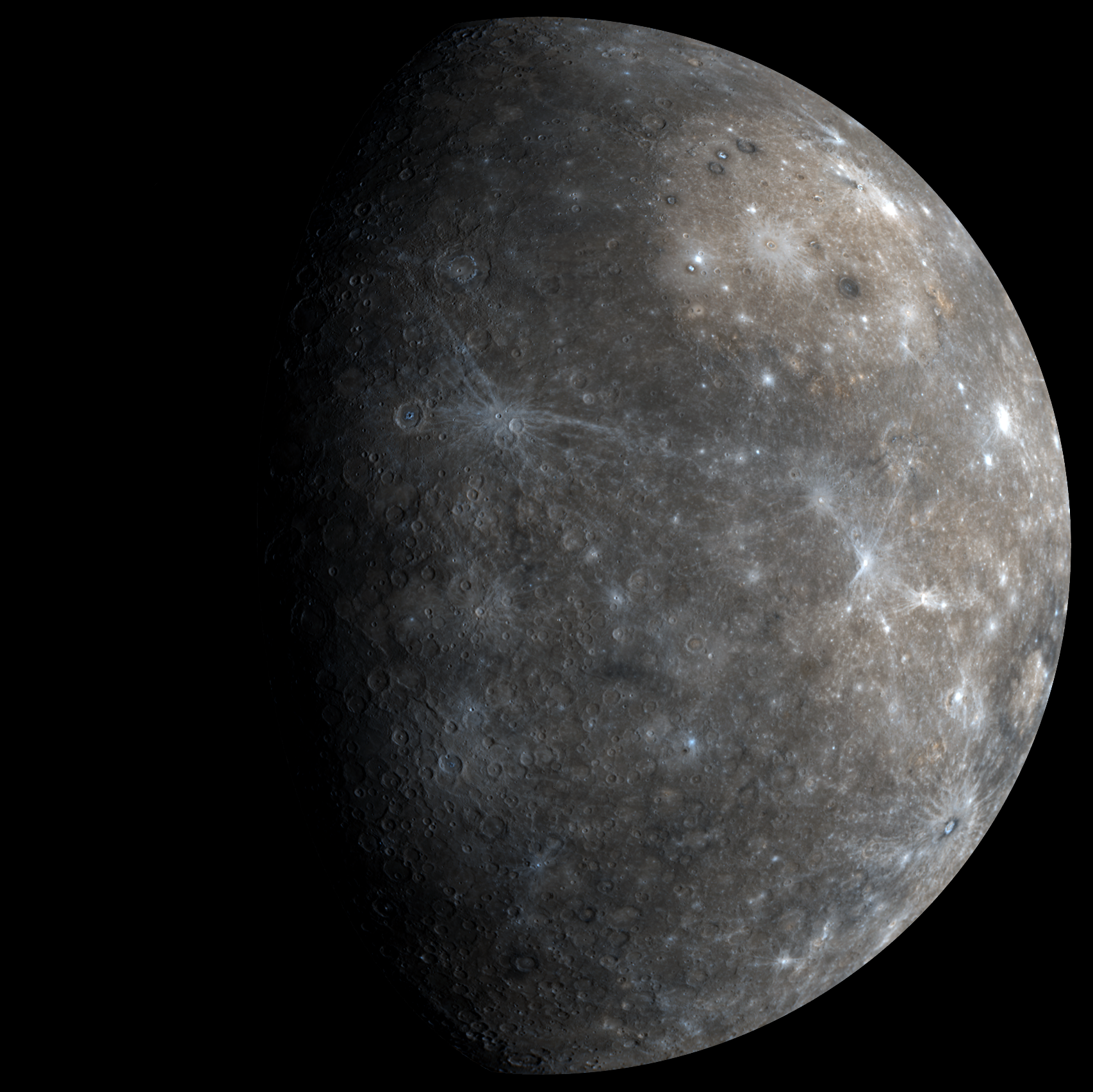 To the casual observer Mercury is a body double of our own moon, but they are very different on the inside. In images, however, it offers very little that is unfamiliar from what we can see with our own eyes when we look up. Included in this post are 4 full color images of Mercury with the above being taken in February, 2012.
To the casual observer Mercury is a body double of our own moon, but they are very different on the inside. In images, however, it offers very little that is unfamiliar from what we can see with our own eyes when we look up. Included in this post are 4 full color images of Mercury with the above being taken in February, 2012.
The above and image also from February, 2012.
Above image captured by Messenger in April, 2012.
Above taken November, 2009.
We are Back
I was locked out of my own Word Press blog. But we are back in. I wonder what I missed to post about?
Curiosity Begins
I last wrote about this mission in 2007. Now it is actually upon us. So never mind the launch… what is remarkable about this trip is when it arrives. JPL commissioned this incredible animation that is so real you feel like it was videotaped live. This is expected to take place August of 2012.
Juno is on the Way to Jupiter
 Juno is the first mission to study Jupiter since Galileo in the 90s and will arrive around July of 2016. The new imaging event on this encounter will be seeing the poles of Jupiter for the first time in great detail. The camera fitted to Juno are specifically for public consumption and promotion and less about science. It will be nice to have an instrument specifically dedicated to securing amazing images.
Juno is the first mission to study Jupiter since Galileo in the 90s and will arrive around July of 2016. The new imaging event on this encounter will be seeing the poles of Jupiter for the first time in great detail. The camera fitted to Juno are specifically for public consumption and promotion and less about science. It will be nice to have an instrument specifically dedicated to securing amazing images.
Vesta as Seen by Dawn July 9
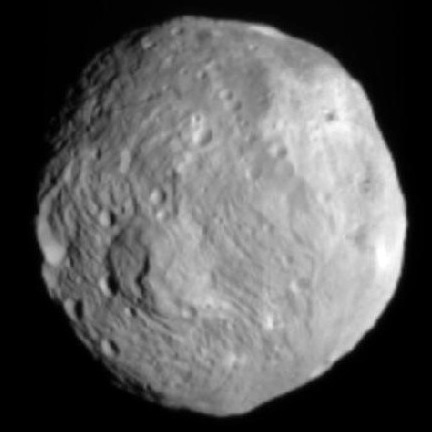 Apparently Dawn has achieved an orbit around Vesta. There was some concern that it would even be possible considering Vesta’s weak gravitational pull. This is the first time an object has been placed in orbit around an object in the Asteroid Belt.
Apparently Dawn has achieved an orbit around Vesta. There was some concern that it would even be possible considering Vesta’s weak gravitational pull. This is the first time an object has been placed in orbit around an object in the Asteroid Belt.
Sun Goes Boom (Not Really, No Sound in Space)
Voyager 1 Approach Video by Bjorn Jonsson
Voyager 1 Approach Video by Bjorn Jonsson from Chopping Block on Vimeo.
“This movie is different from similar Voyager movies because I'm keeping Jupiter's size constant. This is accomplished by reprojecting the source images to simple cylindrical projection and then rendering everything using the same viewing geometry. I also sharpened the images a bit to better reveal various details.” — Bjorn Jonsson
The time lapse estimation is about 10 Earth hours per second. Special thanks to unmannedspaceflight.com for all the awesome.
Epoxy Hartley 2 Encounter

Now That is a Comet
DIY Space Exploration
The video you are watching comes from a camera attached to a weather balloon that rose into the upper stratosphere and recorded Earth against the blackness of space. This is amazing if you consider its a family that just decided to try it. Anyone could have done this before NASA or the Soviets had the ability to video record been as common as it is today. It is also worth noting that this is fairly similar to the way the Air Force did actually obtain the first ever images of Earth from space.
Robonaut
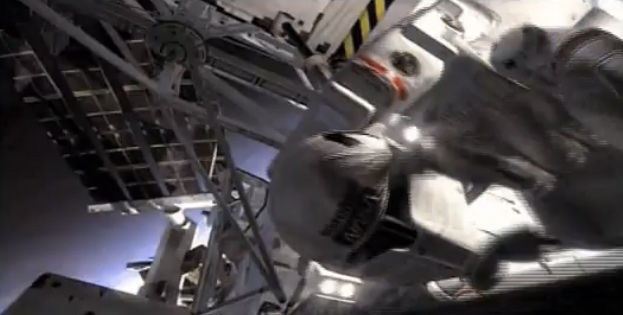 No, this is not Boba Fett in a deleted scene from a Star Wars movie. This is for real. NASA plans a “robonaut” on the Moon in 1000 days… from now!? NASA really doesn’t understand how to promote itself does it… How is this not bigger news?
No, this is not Boba Fett in a deleted scene from a Star Wars movie. This is for real. NASA plans a “robonaut” on the Moon in 1000 days… from now!? NASA really doesn’t understand how to promote itself does it… How is this not bigger news?
Hayabusa Delivers
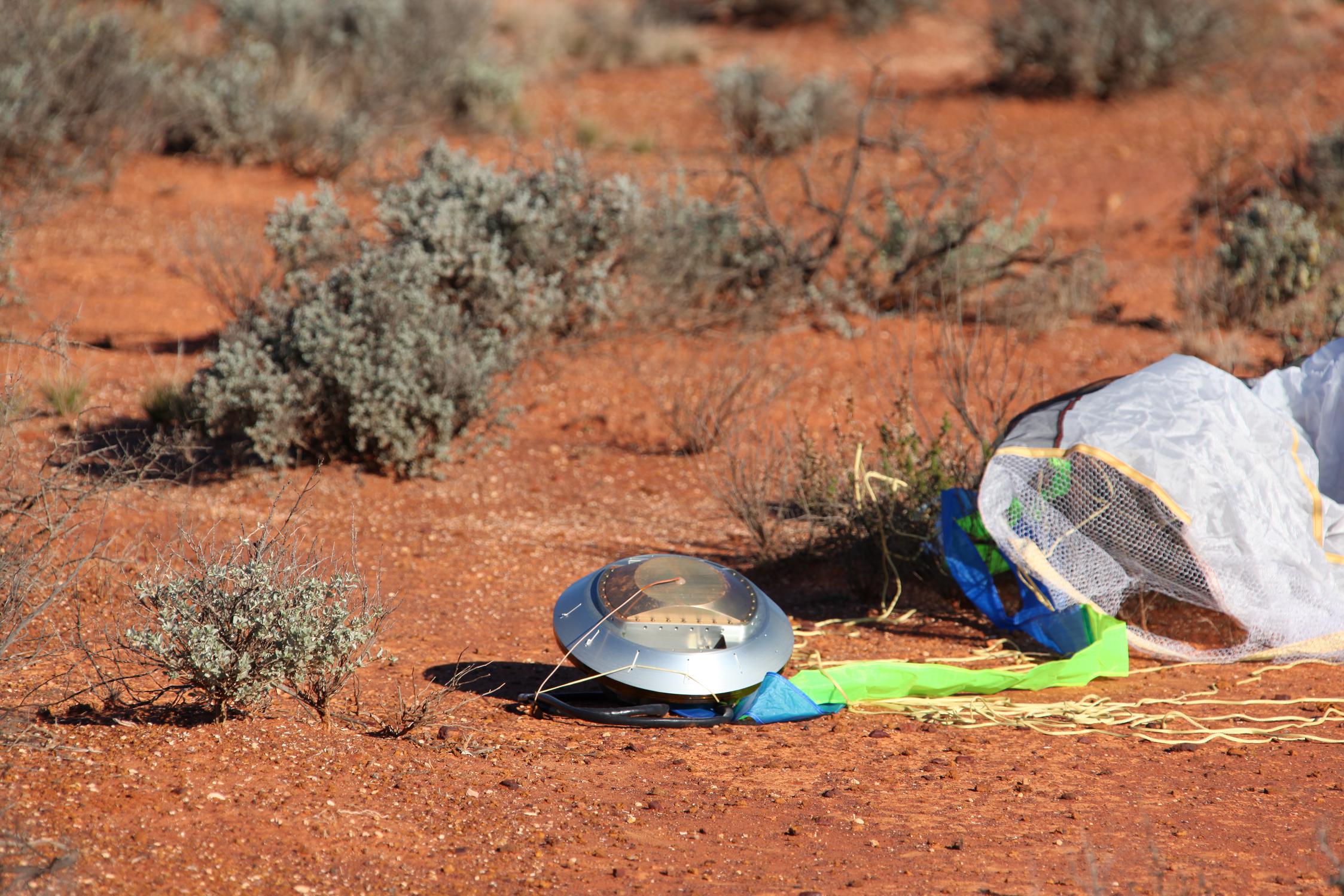 In contrast to nearly every other phase of the mission to and from Itokawa, the re-entry and landing on Earth went without a hitch. The capsule was retrieved and returned to Tokyo, where hopefully it will contain the first ever asteroid samples that did not go through the extreme heat of passing through the Earth atmosphere.
In contrast to nearly every other phase of the mission to and from Itokawa, the re-entry and landing on Earth went without a hitch. The capsule was retrieved and returned to Tokyo, where hopefully it will contain the first ever asteroid samples that did not go through the extreme heat of passing through the Earth atmosphere.
June: Hayabusa Comes Home?
 If you Google “Hayabusa” you will likely find a few articles about a mission plagued by problems and will leave you with the impression that the engineers at JAXA are a bunch of bumbling goons. What you will find less of is the fact that a sample-return mission is just about the most difficult types of missions any organization can attempt. As a matter of fact, only 4 sample-return missions (other than Apollo) have ever been successfully executed in history. Two Lunar missions by the Soviets with Luna 20 and 24 and much later, two American lead missions Genesis and Stardust which collected space dust and cometary particles. It is worth noting also that only two of those missions actually included landing on the surface of another body, grabbing some samples and then returning home. So for JAXA to even attempt such a bold mission without having even 1% the robotic mission experience of the USA and the Russians is all by itself an accomplishment.
If you Google “Hayabusa” you will likely find a few articles about a mission plagued by problems and will leave you with the impression that the engineers at JAXA are a bunch of bumbling goons. What you will find less of is the fact that a sample-return mission is just about the most difficult types of missions any organization can attempt. As a matter of fact, only 4 sample-return missions (other than Apollo) have ever been successfully executed in history. Two Lunar missions by the Soviets with Luna 20 and 24 and much later, two American lead missions Genesis and Stardust which collected space dust and cometary particles. It is worth noting also that only two of those missions actually included landing on the surface of another body, grabbing some samples and then returning home. So for JAXA to even attempt such a bold mission without having even 1% the robotic mission experience of the USA and the Russians is all by itself an accomplishment.
So what were the failures? Well, there is a long list of issues including: a Solar Flare that destroyed solar cells aboard the craft, two reaction wheels that control movement failed, two attempts to fire pellets at the surface failed (to kick up the samples into the collection cannister) and finally a whole litany of communication errors, fuel leaks and telemetry issues which put the mission in serious doubt of ever returning to Earth. To make a long story short — the probe did touch-down on the surface of asteroid Itokowa. The first such mission ever intentionally designed to do so (NASA did have an impromptu touch down on 433 Eros in 2000, but that was more a controlled crash). Despite the pellet failures, mission specialists think that the very act of touching down was likely to kick up enough dust to collect some materials in the collection canister. After much wrangling with a seriously debilitated spacecraft they managed to get Hayabusa on make-shift trajectory back to Earth, very much later than planned… but home just the same.
With fingers crossed, the sample package is to parachute down in South Australia on or around June 13th at which point it will be shuttled back to Japan and hopefully they will find something contained within. Even if it is just a few particles, it will still be the only samples of asteroid particles un-altered by the extreme heat of a natural Earth entry (aka: a meteor) and only the 3rd time in history a probe landed on another world and returned a piece of it back to Earth for study. Not bad for the new kids in space.
Pictured at top is a frame from the trailer “Hayabusa Back to Earth” in anticipation of the potentially successful sample-return mission. It appears to be a 3-D render based on actual images returned from the mission. The second is an actual image with the shadow of the spacecraft as it maneuvered to a close encounter with its target. The third image illustrates what touch-down may have been like for Hayabusa. You can see the large amount of theoretical dust kicked up by the thrusters which may be JAXA’s best hope for actually having captured particles in the sample-return canister.
An X Asteroid?
 What NASA thinks we might be looking at here is an asteroid that was recently shattered by another asteroid, giving it a comet-like appearance. It stays within the asteroid belt, so it cannot be a comet as those objects are known to be dusty ice-balls that stay in highly elliptical orbits around the Sun.
What NASA thinks we might be looking at here is an asteroid that was recently shattered by another asteroid, giving it a comet-like appearance. It stays within the asteroid belt, so it cannot be a comet as those objects are known to be dusty ice-balls that stay in highly elliptical orbits around the Sun.
Could the Phoenix Rise Again?
 It seems pretty unlikely to happen, but starting on January 18 the Mars Odyssey Orbiter will begin listening for signals from the Phoenix. The mission ended last November as the Sun became too dim to continue to provide the solar cells enough energy to keep Phoenix warm and operable. The lander was never intended to survive a Martian winter and has most likely been devastated by the extremes and unlike the rovers, Phoenix is in a polar region which makes those extremities of a Martian winter even greater. Now with the end of Martian winter comes the addition of more sunlight, comparable warmth and therefore a reason to think maybe we can grab enough power to wake up and resume operations. So nobody really expects a technical miracle to take place this week, but in the unlikely event that the lander has survived… the science teams already have a plan in place to take that advantage.
It seems pretty unlikely to happen, but starting on January 18 the Mars Odyssey Orbiter will begin listening for signals from the Phoenix. The mission ended last November as the Sun became too dim to continue to provide the solar cells enough energy to keep Phoenix warm and operable. The lander was never intended to survive a Martian winter and has most likely been devastated by the extremes and unlike the rovers, Phoenix is in a polar region which makes those extremities of a Martian winter even greater. Now with the end of Martian winter comes the addition of more sunlight, comparable warmth and therefore a reason to think maybe we can grab enough power to wake up and resume operations. So nobody really expects a technical miracle to take place this week, but in the unlikely event that the lander has survived… the science teams already have a plan in place to take that advantage.
Above is an impressive mosaic image of the frozen water that was found beneath the lander later in the mission. It is thought that the thrusters (which enable a soft surface landing) kicked away the top soil on the way down, revealing a sheet of frozen ice water right underneath the lander’s feet.

